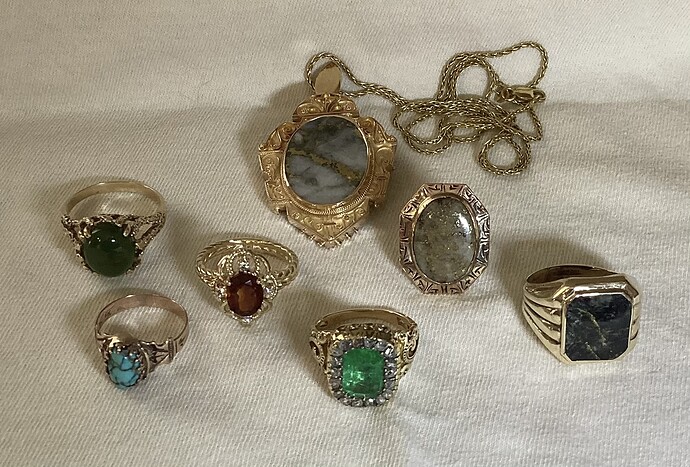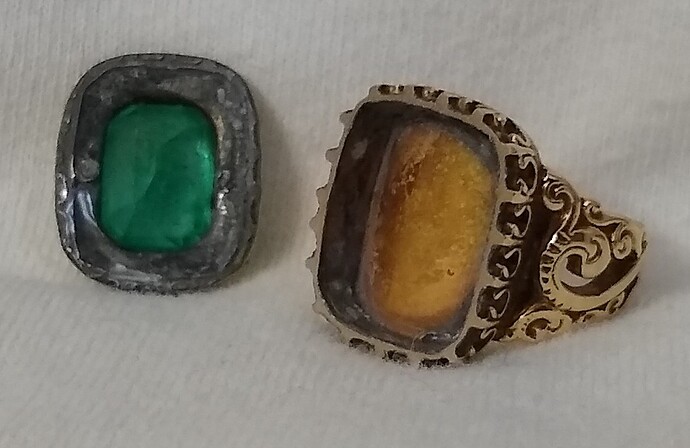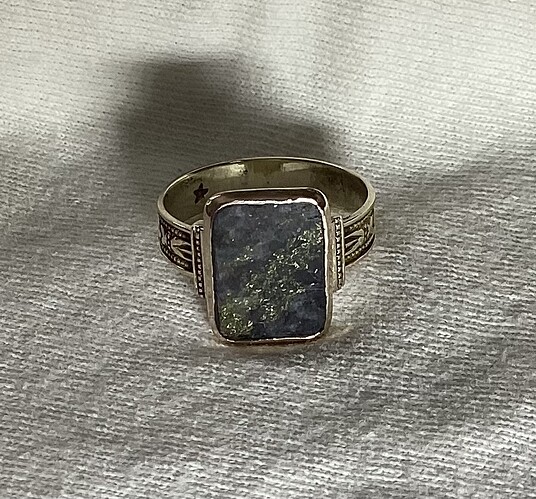Finally got around to catch up on some long awaited gold repairs on some antique and vintage jewelry. I try to repurpose the nice pieces rather than scrap them if possible. We have jade, Persian turquoise, spessartite garnet, Colombian emerald (Georgian c1750), and gold laced quartz (California). Only a couple left on the bench to finish off.
@StevesTrail You’ve done an excellent job repurposing this jewelry! As a person who has collected both antique & vintage fine jewelry, I admire that you didn’t just scrap these pieces. I also really like all of your gemstone choices, too. These rings & pendant are beautiful. (I hope you’ll share the remaining gold repairs when completed.
ETA: I assumed that the stones are replacements but that may be a wrong assumption on my part.
All stones are replacements except the emerald. The top of that ring had been lead soldered since the emerald could not be removed. I clean up and dissolved the lead (coated the emerald with wax for protection) then had the top laser welded back on. Before and after. Zinc remains as it does not dissolve.
What did you use to dissolve the lead solder, Steve? In the past I’ve always had to excise it by grinding, filing, or sanding it away completely. Once that stuff begins to alloy with the underlying precious metal under heat, it will contaminate clear through and can ruin anything it’s applied to.
I removed the bulk of the lead as you do @mmrogers . On some items like this ring the tolerances for the top and bottom mating surfaces were close and there was some lead inside the ring corners and on the top exterior areas.
The solution originated from the need to remove lead from spent fuel rods. I can PM you the formulation and you can decide from there if you like.
Thought that might be the case. Laser welding to reattach the top setting is very smart. Ran into this issue with one of our bracelets a third party had attempted to repair . Unfortunately the solder had already penetrated and alloyed with the underlying metal. There was no way to fully remove it, as every time heat was applied it simply went deeper and deeper. Don’t know if I’ll ever use it, but would love to know how to strip it out.
ETA: Got the formula in a PM from @StevesTrail. Thanks Steve!
Nice work, @StevesTrail !
I love them all, especially the pendant and emerald ring.
You have excellent taste @Stracci .



